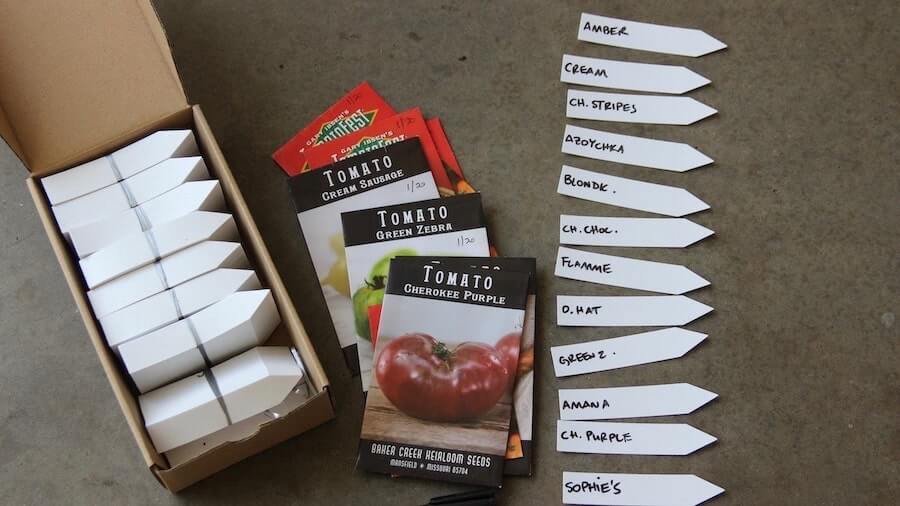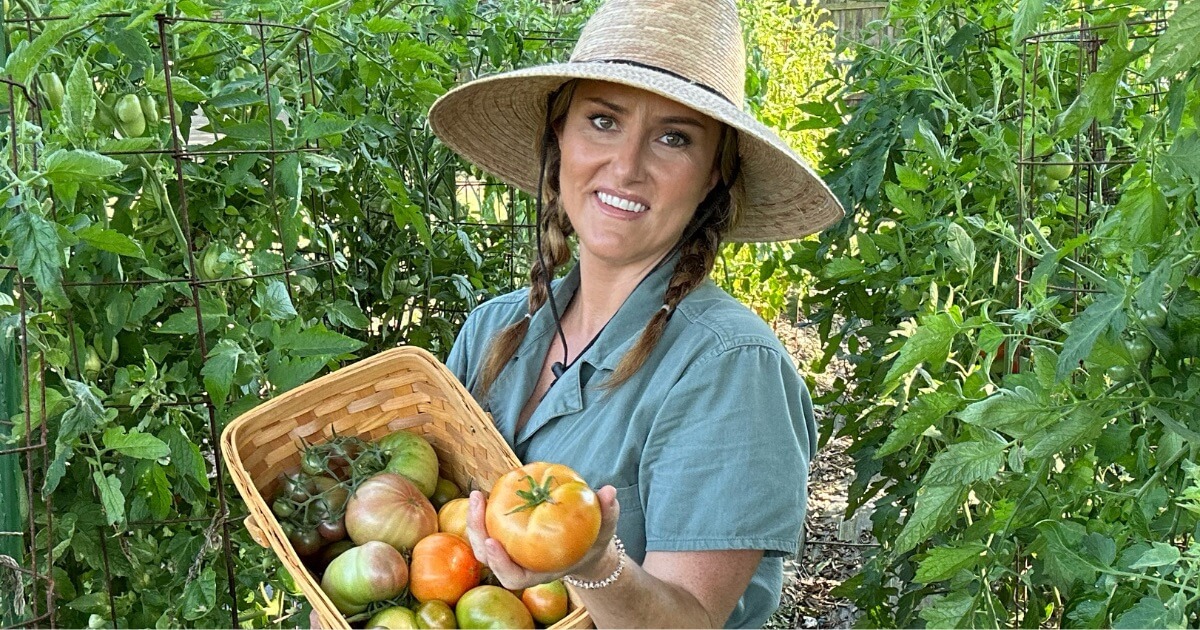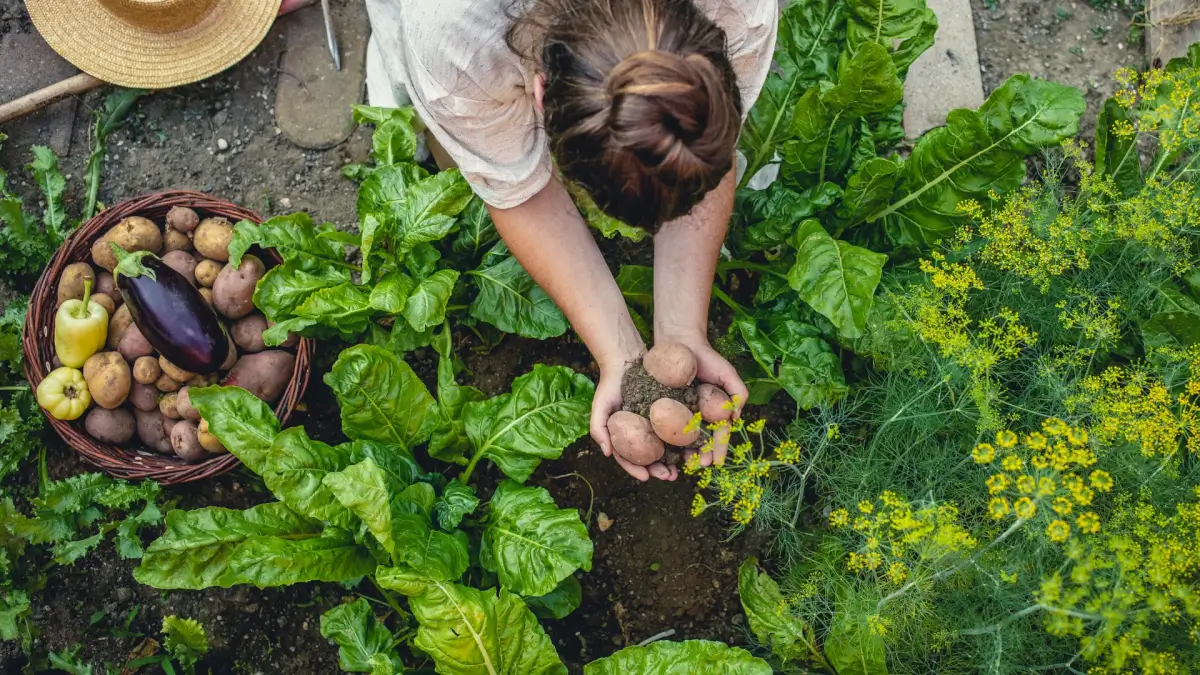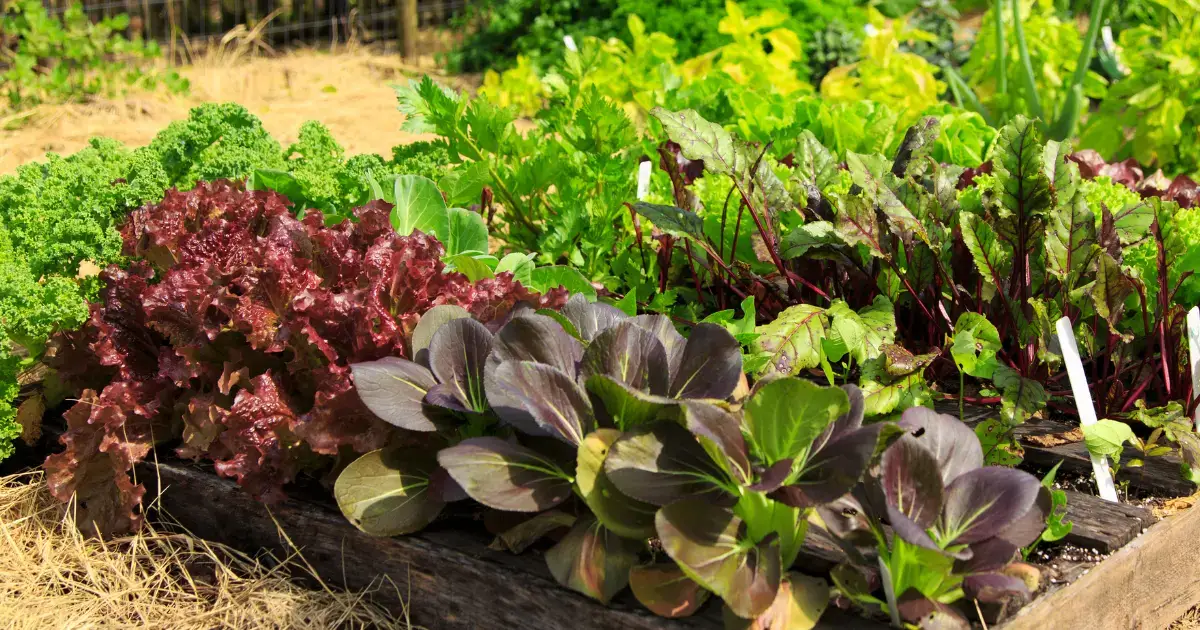
For those of us living in Dallas/Fort Worth, we are lucky enough to enjoy homegrown produce year-round. Even better, we can grow some crops twice. Tomatoes are one of those special North Texas crops that we can harvest in early summer, and again in the fall. And when properly managed, fall tomatoes often outperform the spring crop.
Here are five key steps to growing fall tomatoes in your North Texas garden.
1. Plan ahead.
By May 1st, you will need to decide whether to start fall tomatoes by seed or purchase a transplant. Here are the benefits of both:
Benefits of growing fall tomatoes from seed:
- You can choose from thousands of different tomato varieties including rare and unusual ones.
- You can control the health, quality, and size of your seedling at transplant.
- Starting plants from seed is more cost effective.
Benefits of growing fall tomatoes from transplants:
- Transplants available at quality garden centers (not home improvement stores) are typically varieties that perform well in North Texas.
- You don’t need to dedicate a location indoors or invest in seed starting supplies.
- You don’t have to care for the seedlings for 4-6 weeks before planting outdoors.
If you decide to start by seed, fall tomato seeds should be started in May. (Learn how to start fall tomato seeds here.)

2. Select the right varieties.
Purchasing your fall transplants from local garden centers can take some of the guesswork out of selecting fall-appropriate varieties, but what if you want to start your own?
When selecting tomato varieties to start by seed for fall growing, here is what to look for:
- Small-fruited varieties. Tomatoes with smaller fruit tend to produce earlier and faster than tomato varieties that produce big tomatoes.
- Heat-tolerant varieties. Some tomatoes can tolerate high heat levels better than others. Look for tomato varieties that are described as “heat tolerant”, or varieties that were developed specifically for hot and humid conditions.
- Early maturing varieties. Independent of fruit size, some tomatoes simply begin to fruit earlier than others. Growing early-maturing types ensures that you will get a strong harvest before the first fall frost. These are sometimes described as “short season” tomatoes.
Need some suggestions? Here is a list of varieties that fall into the categories above:
Small-fruited Heirlooms
Small-fruited Hybrids
Heat-Tolerant Heirlooms
Heat-Tolerant Hybrids
Sunmaster
Early-Maturing Heirlooms
Early-Maturing Hybrids
3. Plant fall tomatoes in the first half of July.
Fruiting and flowering is a function of temperature and daylength. So, fall tomatoes must be planted early enough in the summer so that there is still enough daylength left when they start to set fruit.
Planting fall tomatoes in the first half of July (July 1st – July 15th) gives the plants enough time to grow into the proper size for producing and setting fruit.

4. Protect tomatoes from the intense sun and heat.
Fall tomato crops are sometimes even larger than tomatoes grown in spring. The challenge is keeping the young tomato plants healthy through the hot North Texas summer.
After transplanting fall tomato seedlings, protect them from intense sun and heat with some shade.
Shade cloth is an essential supply in our garden shed. We use it to protect tender seedlings while hardening off, and to protect plants from the brutal Texas summer heat. Shade cloth can reduce ambient temperatures by as much as 15 degrees.
5. Water daily by hand.
During the first two months of growth, tomatoes need a large amount of water. After transplanting your fall tomatoes, water them deeply every day.
It is also important to always water tomatoes by hand – if possible – so that the water can be directed at the soil and roots, not the leaves. Water droplets on tomato leaves can transport disease. Tomato plants are more prone to disease during hot summer months when plants are stressed.

6. Harvest tomatoes at the very first signs of ripening.
Scientists have proven that tomatoes harvested at the very first signs of ripening taste just as good as tomatoes left to ripen on the vine.
As soon as tomatoes start to change color from green to red (or yellow or orange) it is time to pick them off the vine and let ripen indoors. This is the best way to protect tomatoes from squirrels, birds, rodents, and thieves.
Once harvested, leave tomatoes in a cool place until ripened fully. Never put tomatoes in the refrigerator.

7. Save seeds to plant in the spring.
The best part about growing tomatoes twice? The chance to re-test varieties that you loved in the spring to see if they can really handle all North Texas conditions. If a tomato grows well in both spring and fall, then you know it’s a clear winner in your North Texas garden, and it’s a good idea to save some seed for planting again the next spring.
How to save tomato seeds:
- Save seed from a plant’s first fruits.
- Slice tomato in half, and squeeze out seeds into a small plastic or glass cup.
- Add a small amount of water to the seeds and mix.
- Cover cup and set out of direct sunlight.
- After 2-3 days, strain and rinse the seeds.
- Spread seeds onto a paper towel and let fully dry.
- Store seeds in an air-tight container that is clearly labeled. Choose a location that is dark and cool. Seeds will store several years this way.
Summary
With just a little extra planning, you’ll be eating homegrown tomatoes well into December by planting a fall crop of tomatoes in your North Texas backyard. The key is planning ahead and taking good care of your plants.
- Can Eating Tomatoes Help Prevent Weight Gain? New Study Says Yes - May 25, 2025
- New to Gardening? Join Our Step-by-Step Beginner Gardening Class - April 24, 2025
- Why “Intensive” Gardening is Not Good - March 9, 2025




